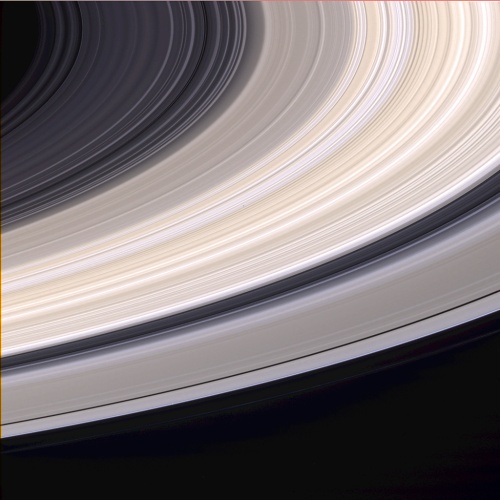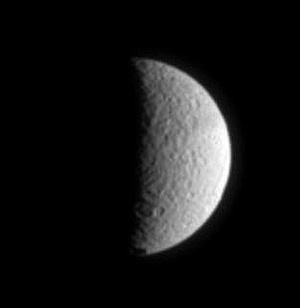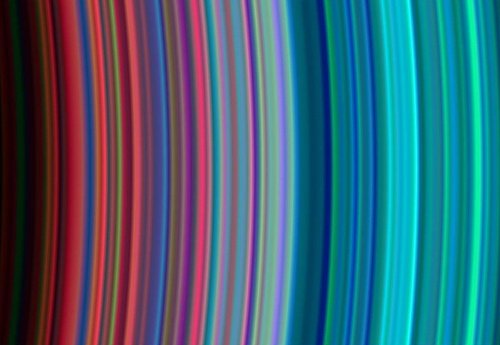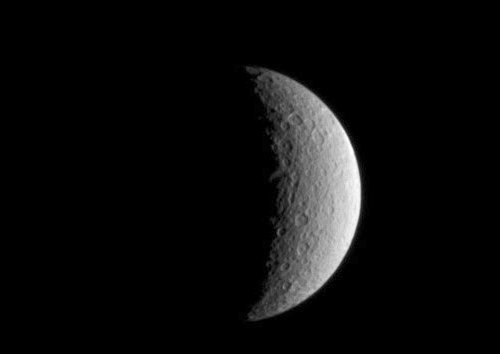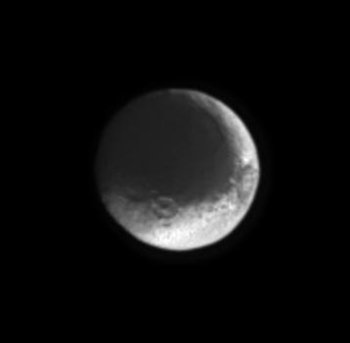Key Takeaways:
Near closest approach, Cassini captured this view of an 8-mile (13-kilometer) wide crater with a debris-covered floor. Radial streaks on the crater walls are due to ejacta fragments sliding down the slope. Boulders ranging in size from about 160 to 990 feet (50 to 300 meters) wide are also visible. They may have been excavated by large impacts, perhaps from some other region of Phoebe. There is no visible evidence for layering in this region, as on other parts of this moon.
Nine days before it entered orbit, Cassini spacecraft captured this exquisite natural color view of Saturn’s rings. The images that make up this composition were obtained from Cassini’s vantage point beneath the ring plane with the narrow angle camera on June 21, 2004, at a distance of 4 million miles (6.4 million kilometers) from Saturn. The B ring, the brightest part of the rings, curves from the upper right to the lower left in the image. Many bands throughout the B ring have a pronounced sandy color.
The half-full Tethys hangs before Cassini’s narrow-angle camera in this image, taken 1 million miles (1.7 million km) from the satellite. Tethys is about 659 miles (1,060 km) across, and this image has a scale of roughly 6 miles (10 km) per pixel.
Saturn’s rings from the inside out: The Cassini Division at left (faint red) is followed by the A ring in its entirety. The A ring begins with a reddish interior, indicating a greater proportion of dirt, followed by more turquoise — ice — at greater distances from the planet. The red band roughly three-fourths of the way outward in the A ring is known as the Encke Gap.
This image shows the outer C and inner B rings, respectively, from left to right, with the inner B ring beginning a little more than halfway across the image. The general pattern is from dirty (red) particles to ice (turquoise) at greater distances from Saturn.
The first artificial satellite in the Saturn system, the Cassini spacecraft, returned images of the natural moons following a successful insertion into orbit. This is an unmagnified view of the moon Rhea.
With a diameter of 950 miles (1,528 kilometers ) across, Rhea is Saturn’s second largest moon. The Voyager spacecraft found that like Dione, Rhea has one of its hemispheres covered with bright, wispy streaks which may be water frost.
This view shows a heavily cratered surface, and thus it is most likely ancient. Many of the craters visible here have central peaks. Cassini soon will look for clues to help unlock the moon’s geologic history.
Titan’s veil begins to lift as Cassini’s cameras peer through the hazy moon.
This image acquired at a range of 213,700 miles (344,000 kilometers ) shows details at Titan’s surface never seen before. The image shows only surface brightness no topographic shading. The finest features are less than 10 kilometers (6 miles) across. In other areas the surface boundaries are less distinct perhaps due to different geologic process or atmospheric effects. There are some linear features that could be impact craters but the fact that many features are linear suggests that other geologic processes are shaping the surface.
The moon with the split personality, Iapetus, presents a puzzling appearance. One hemisphere of the moon is very dark, while the other is very bright. Whether the moon is being coated by foreign material or being resurfaced by material from within is not yet known.



